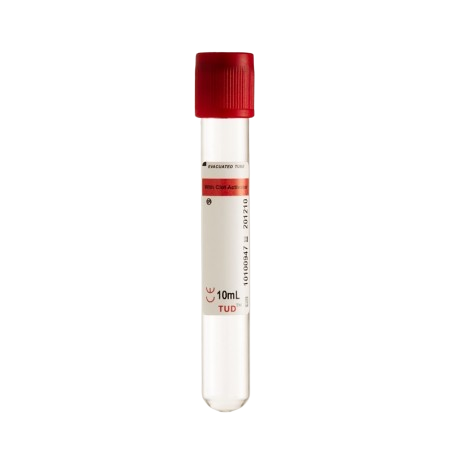ENDOCRINE SERVICES
|
No |
Test |
Time required for Acquisition of test result |
|
1 |
HbA1c |
8 working hours |
|
2 |
Aldosterone |
2-3 month |
|
3 |
IGF-1 |
2-3 month |
|
4 |
Plasma Renin Activity |
2-3 month |
|
5 |
TSH Receptor Antibody |
2-3 month |
|
6 |
17-OH Progesterone |
2-3 month |
|
7 |
Islet cell |
2-3 month |
|
8 |
Anti -GAD |
2-3 month |
Collection of Specimens Specimen collection procedure:
Make sure the specimen is taken from the correct patient. The patient's name, and hospital registration number should be checked. Make sure the test application at LIS is accurate and complete.
- Make sure the information on the specimen label is easy to see.
- Stick the label on the specimen before filling the label.
- Specimen collection and labeling must be done by the same person.
- The information filled in on the label must be done next to the patient immediately after specimen collection.For specimens that are at risk of carrying infectious diseases such as diabetes and HIV, must be 'tagged' on the specimen and application form with a red mark as below:
Blood Collection Specimen collection procedure:
= 1 inversion
|
The color of the specimen tube cap |
Components in the specimen tube |
Number of inversions |
|
|
EDTA |
8 to 10 times. |
|
|
Clot Activator |
5 times. |
|
|
Gel Tube and Clot Activator |
5 to 8 times |
For specimens using a plain tube:
- a) Dissolve the 'clot activator' with the specimen by inversion 5 times slowly
- b) Let the blood clot vertically for 5 minutes or until the clot is complete and visible.
- c) The specimen is sent to the laboratory to be processed and centrifuged.
For HbA1c specimens:
- a) Dissolve the blood with EDTA component by 8-10 inversions slowly.
- b) Send the specimen to the laboratory for testing.
For Specimens using a gel tube:
- a) Dissolve the 'clot activator' with the specimen by inversion 5-8 times slowly
- b) Let the blood clot vertically for 25-30 minutes or until the clot is complete and visible.
- c) The specimen is sent to the laboratory to be processed and centrifuged.
Warning:To prevent hemolysis specimens:
- a) Do not force blood out of the needle when filling in the specimen tube.
- b) Do not do the blood inversion of the blood specimen roughly
- c) Should send the specimen to the laboratory as soon as possibled
Do not expose the specimen to high temperatures.
Procedures For The Use of Endocrinology Laboratory Services For Research Purposes
- Researchers must make a letter of application to the Director of the Endocrinology Laboratory to use the service facilities available in the laboratory to conduct testing.
- Make a copy to the senior medical laboratory science/technologist.
- The application letter must contain the following details:
i. Research title
ii Research grant number
iii Name of principal investigator. - Researchers can do the test by choosing one of the following options:
- All reagents and consumables are purchased by the researcher and the researcher has to pay the overtime fee to the laboratory staff who conduct the test according to the rate set by the laboratory.
- Paying for each necessary laboratory test at the price set by the laboratory management without having to pay other related costs.
- The involvement of the laboratory must be recognized in any scientific publication that will result from the research carried out.
- Overtime claims should take into account the time taken to process the specimen.
- The laboratory deserve to make any changes to the above claim rate from time to time.
Laboratory test results will be reported in the LIS system after verification. The production of laboratory results is through the following ways:
- Circulation as usual.
Test results will be entered into the LIS in compliance with the test production time.
- Circulation by mail.
For external test applications, result will be send by mail.
ENDOCRINE
WEBLINK
OPERATION HOUR
|
Monday - Wednesday |
8.10am - 5.10pm |
|
Thusday |
8.10am – 3.40pm |
|
Friday – Saturday |
CLOSED |

